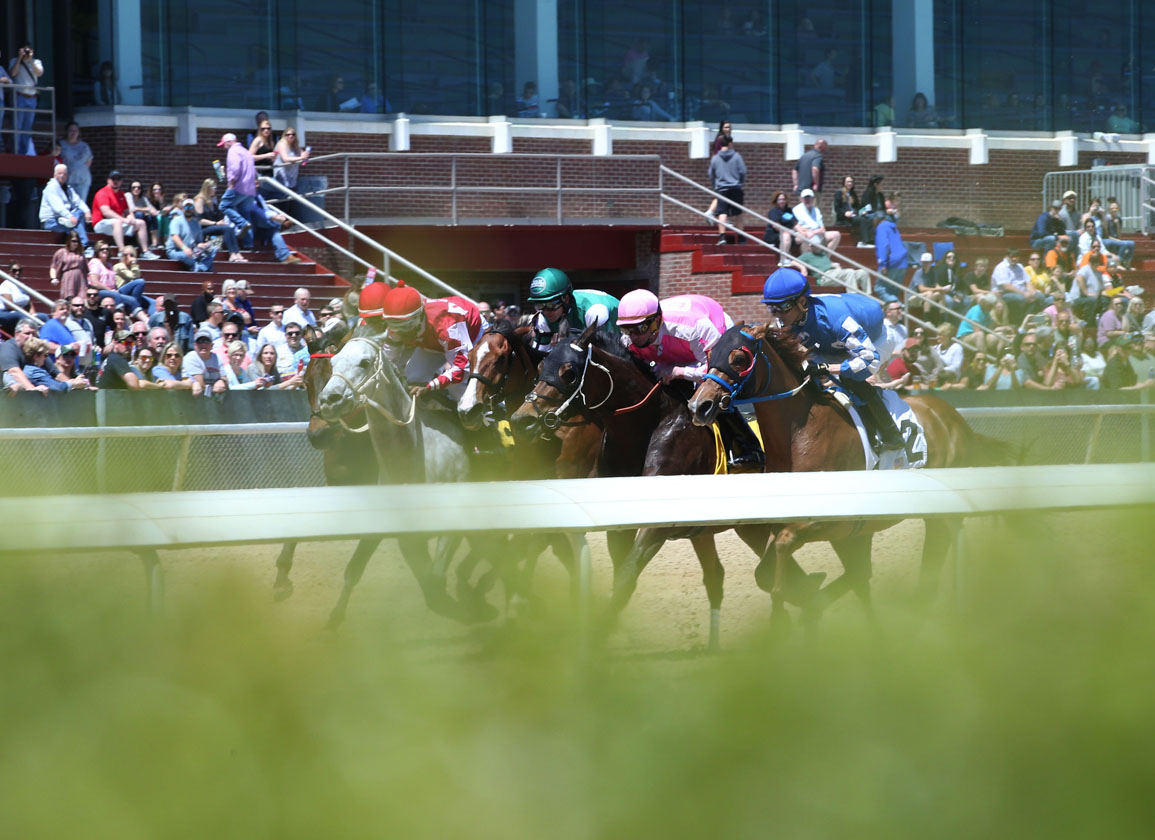The Week in Review by T.D. Thornton
It was a little odd to see Oaklawn Park in the mix of tracks running on the first weekend of December. It was even stranger to see the Arkansas track carding races for 2-year-olds, which has not happened since Mar. 27, 1975.
The winds of change are blowing through the pre-winter mists of Hot Springs. The biggest challenge facing Oaklawn as it embarks upon a Dec. 3-May 8 season for the first time is whether or not the popular track can retain the “boutique meet” flavor and feel it has cultivated over the past several decades even though the racing schedule will now extend over five months.
Oaklawn began nudging out the boundary of the spring portion of the season in 2019, when it scheduled a May 4 closure instead of the traditional mid-April wrap-up. Now the winter start has been rolled back to better dovetail with the end of the Churchill Downs meet in late November, attracting some outfits that raced in Kentucky while at the same time providing new competition to two other tracks controlled by Churchill Downs, Inc., Fair Grounds and Turfway Park.
When Oaklawn announced its intention to expand for 2021-22 back in July, it touted the ability to offer six-figure allowance races over a 66-day meet as a major draw to horse owners and trainers.
Although it's too early to get a definitive snapshot of exactly how the prospect of big bucks will translate to the Thoroughbred population, here's a comparative look at field sizes for all three venues based on the Friday, Dec. 3, and Saturday, Dec. 4, programs:
Oaklawn on Friday carded nine races featuring 75 starters. Saturday's 10 races drew 85 starters. The average field size combining both days was 8.4.
Fair Grounds on Friday ran nine races with 71 starters. Saturday had nine races with 64 starters. The two-day average field size was 7.5.
Turfway's Friday card had eight races with 77 starters. Saturday's eight races lured 83 starters. The two-day average was 10 starters per race.
Adverse weather was not an issue at any of the venues over those two dates. And clearly, there are some nuances that make direct comparisons dicey.
Oaklawn has the clear purse money advantage. Fair Grounds has the draw of a turf course, which should theoretically be helping its field-size numbers. And you can argue that comparing Turfway to either of those two tracks is not relevant, because Kentucky racing in winter is decidedly more blue-collar than the product at either Hot Springs or New Orleans.
The smart money says the matchup to watch over the course of the season is Oaklawn versus Fair Grounds. They're closer together geographically and draw from similar horse populations.
But Mother Nature could be an equalizing force. When ice and snow descend upon Arkansas, it tends to have a paralyzing effect. Oaklawn lost eight days of racing last February, and a desire to avoid the prospect of bad weather was among the factors cited when Oaklawn moved its second-weekend-of-January start date back to the fourth weekend of the month in 2019.
Remsen Recap
It's been a long time since the path to Louisville ran through New York on the first Saturday in December. Only three horses in the last 58 years–Thunder Gulch, Go for Gin and Pleasant Colony–have parlayed wins in the GII Remsen S. into a blanket of roses in the GI Kentucky Derby.
Winning the final graded stakes of the season in New York at nine furlongs looks promising in past performances, but that shine hasn't really carried over to subsequent 3-year-old form in recent seasons (with the notable exception of Catholic Boy, who won the 2017 Remsen, missed the 2018 Triple Crown, then won the GI Travers S.).
This year could be different. Mo Donegal (Uncle Mo) and Zandon (Upstart) put on a rousing stretch fight from the eighth pole home on Saturday at Aqueduct. Both were stepping up off of maiden wins and trying two turns for the first time, and they were 9 3/4 lengths ahead of the remaining six also-rans.
Mo Donegal had a ground-saving go under Irad Ortiz Jr. for most of the trip behind a dawdling pace (first four quarters in :25.18, :26.29, :24.87 and :24.94), then skimmed across the heels of the four frontrunners to escape traffic at the top of the lane.
Zandon, by contrast, stalked three deep and jockey John Velazquez had him cleanly positioned to get second run at two tiring longshots coming off the final bend. He split horses with authority, then braced for the mid-stretch confrontation with the onrushing Mo Donegal.
They crested the eighth pole in lockstep, then the outside-running Mo Donegal tightened the lateral gap between them under right-handed stick work. But being put into tighter quarters seemed to embolden Zandon, even though it initially seemed Mo Donegal had the better late-race momentum through their final eighth in :12.33.
The Equibase chart caller minced no words in describing how Irad Ortiz Jr. then threw “repeated exaggerated crosses with the left-hand rein near the face of the runner-up” in an “attempt to intimidate” Zandon. The two bumped and brushed approaching the wire.
Mo Donegal won it by a nose, but Zandon got his head down in front just after the finish, galloping out slightly stronger and longer than the winner. Both earned an 89 Beyer Speed Figure.
Laurel still a no-go
There were no timed workouts at Laurel Park through Sunday, even though earlier in the week track executives had stated that Saturday was the likely date for preliminary repairs to the dirt's cushion and base to be completed. It's now been a full week since horses have been allowed over the track at full speed.
As reported last week, seven Laurel Park horses have died since Nov. 6, and eight total have perished this autumn after sustaining fractures while racing or training over the newly installed main dirt track there.
Laurel had ceased racing back Apr. 11 to begin an emergency, multi-million-dollar overhaul of the main track, which reopened with no safety issues Sept. 9. But the onset of colder weather has brought problems that are believed to involve the improper settlement of the base, particularly in the homestretch.
Although executives from The Stronach Group, which owns Laurel, chose their words carefully when discussing the situation via press release last week, they are likely to face substantial grilling from the Maryland Racing Commission when the board meets Tuesday. A discussion of the safety of the surface had already been on the commission's agenda even before the track was forced to call off Dec. 3-5 racing.
Not a subscriber? Click here to sign up for the daily PDF or alerts.






